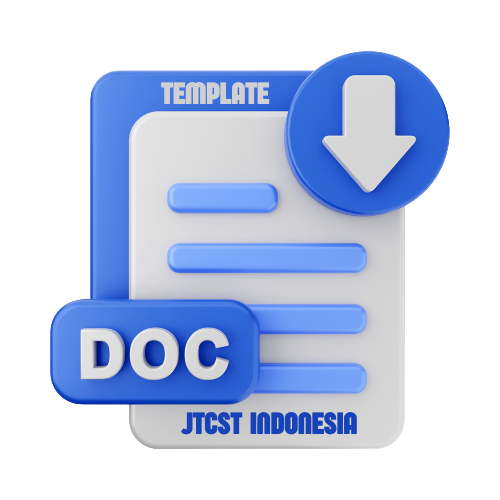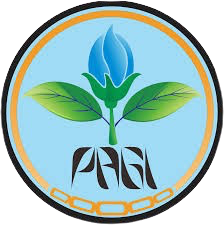Growth and Production of Chinese Kale (Brassica oleracea L.) on Different Growth Media and AB Mix Substitution with Organic Nutrition of Float Hydroponic Systems
DOI:
https://doi.org/10.22219/jtcst.v2i2.10549Keywords:
AB Mix, Growing media, KailanAbstract
This research aimed to assess the effect of several types of growing media and AB Mix substitution with organic nutrition on Kailan (Brassica oleraceae L.) growth. The study used a factorial 3 x 4 completely randomized design (CRD) with 3 replications. The first factor is the treatment of growing media which consists of Rockwool, Charcoal husk, and Cocopeat. The second is the AB Mix Substitution with organic nutrition consisting of AB Mix substitution with 0% organic nutrition, AB Mix Substitution with 25% organic nutrition, AB Mix Substitution with 50% organic nutrition, and AB Mix Substitution with 100% organic nutrition. Growth parameters observed included plant height, number of leaves, root length, canopy wet weight, root wet weight, canopy dry weight, root dry weight, and chlorophyll. Data were analyzed using ANOVA and continued by DMRT (Duncan's Multiple Range Test) at 5% level. The results showed that the planting media treatment increased growth in the plant height, number of leaves, root length, canopy wet weight, root wet weight, and canopy dry weight. The treatment of AB Mix substitution with 25% organic nutrition is equivalent to the treatment with 0% organic nutrition for all parameters except chlorophyll. The AB Mix substitution treatment with 50% organic nutrition is not equivalent to the treatment without substitution. The higher substitution treatment will affect growth.
Downloads
References
Anjeliza R.Y., A Mayawati, Baharuddin, dan M.A Salam. 2013 Pertumbuhan dan Produksi Tanaman Sawi Hijau Brassica juncea L.Pada Berbagai Desain Hidroponik. Skripsi. Universitas Hasanuddin.
Azizah. U. N. 2009. Pengaruh media tanam dan jenis pupuk terhadap pertumbuhan dan perkembangan tanaman tomat (Lycopersicum esculentum MILL) dengan teknik budidaya hidroponik. Skripsi. Universitas Islam Negeri Malang.
Badan Pusat Statistik, 2009. Produksi sayuran di Indonesia. Diakses dari www.bps.go.id.
Fahmi, Z. Ismail. 2015.Media Tanam sebagai faktor eksternal yang mempengaruhi pertumbuhan tanaman. balai besar perbenihan dan proteksi tanaman perkebunan Surabaya. http://ditjenbun.pertanian.go.id.
Hambali. P. F., W. E. Murdiono, dan Koesriharti. 2018. Pengaruh substitusi AB Mix dengan nutrisi organik kelinci pada pertumbuhan dan hasil tanaman selada merah (Lactuca sativa L.) dengan sistem rakit apung. Jurnal produksi tanaman. 6(12) : 3096-3105.
Harjoko, D.2009. Studi macam media dan debit aliran terhadap pertumbuhan dan hasil tanaman sawi (Brassica juncea L.) secara hidroponik NFT. Jurnal Agrosains 11(2): 58-62.
Ida.S.R. 2014. Penggunaan lahan dengan menggunakan system hidroponik. Jurnal Universitas Tulungagung Bonorowo. 1(2) :43-50.
Insani. A.N. 2017. Pengaruh pemberian nutrisi organik dengan dosis yang berbeda terhadap pertumbuhan dan produktivitas jagung pakan pada lahan kering kritis. Skripsi. Universitas Hasanuddin Makassar.
Maitimu. D. K., dan A. Suryanto. Pengaruh media tanam dan konsentrasi AB Mix pada tanaman kubis bunga (Brassica oleracea var botrytis L.) sistem hidroponik substrat. Jurnal produksi tanaman. 6(4): 516-523.
Marlina. I., S. Triyono, dan A. Tusi. 2015. Pengaruh media tanam granul dari tanah liat terhadap pertumbuhan sayuran hidroponik sistem sumbu. jurnal teknik pertanian. 4(2) : 143-150.
Nurrohman, M., A. Suryanto dan K. puji. 2014. penggunaan fermentasi ekstrak [aitan (Tithonia diversifolia L.) dan kotoran kelinci cair sebagai sumber hara pada budidaya sawi (Brassica juncea L.) secara hidroponik rakit apung. J. Prod. Tan., 2(8) : 649-657.
Perwitasari, B., M. Tripatmasari, dan C. Wasonowati. 2012. Pengaruh media tanam dan nutrisi terhadap pertumbuhan dan hasil tanaman pakcoy (Brassica juncea L.) dengan sistem hidroponik. J. Agrovigor 5 (1): 14 – 25.
Pradita. N., dan Koesriharti. 2019. Pengaruh nutrisi organik terhadap pertumbuhan dan hasil tiga varietas selada (Lactuca Sativa L.) pada sistem NFT. Jurnal produksi tanaman. 7(4): 706-712.
Sinaga. P, Meiriani., dan Y. Hasanah. 2014. Respon pertumbuhan dan produksi kailan (brassica oleracea L.) pada pemberian berbagai dosis nutrisi organik paitan (Tithonia diversifolia (hemsl.) gray). Jurnal Online Agroekoteknologi 2(4): 1584-1588.
Siregar. J. 2015. Pengujian beberapa nutrisi hidroponik pada selada (Lactuca sativa l.) dengan teknologi hidroponik sistem terapung (THST) termodifikasi. Skripsi. Universitas Lampung.
Subandi.M., P.S. Nella, dan F. Budy. 2015. Pengaruh berbagai nilai EC (Electrical Conductivity) terhadap pertumbuhan dan hasil bayam (Amaranthus SP.) pada hidroponik sistem rakit apung (Floating hydroponics system). Jurnal Pertanian. 9(2): 136-152.
Sukarman., R. Kainde., J. Rombang., dan Thomas. Pertumbuhan bibit sengon (Paraserianthes falcataria) pada berbagai media tumbuh. Jurnal Eugenia 18(3): 215-221.
Sukawati, I. 2010. Pengaruh kepekatan larutan nutrisi organik terhadap pertumbuhan dan hasil baby kailan (brassica oleracea var. alboglabra) pada berbagai komposisi media tanam dengan sistem hidroponik substrat. Skripsi. Universitas Sebelas Maret .Surakarta.
Sutiyoso, Y. 2006. Hidroponik Ala Yos. Penebar Swadaya. Jakarta.
Sutanto.T. 2015. rahasia sukses budidaya tanaman dengan metode hidroponik. Bibit Publisher. Jakarta.
Wiryawan, G.A. 2008. Pengaruh penggunaan pupuk anorganik dan pupuk organik terhadap pertumbuhan dan hasil tanaman kubis merah (brassica oleracea var capitata). (Skripsi Universitas Brawijaya).
Downloads
Published
How to Cite
Issue
Section
License
Copyright (c) 2020 Sinaga et al.

This work is licensed under a Creative Commons Attribution-ShareAlike 4.0 International License.
Authors who publish with this journal agree to the following terms:
- Authors retain copyright and grant the journal right of first publication with the work simultaneously licensed under a Creative Commons Attribution License that allows others to share the work with an acknowledgement of the work's authorship and initial publication in this journal.
- Authors are able to enter into separate, additional contractual arrangements for the non-exclusive distribution of the journal's published version of the work (e.g., post it to an institutional repository or publish it in a book), with an acknowledgement of its initial publication in this journal.
- Authors are permitted and encouraged to post their work online (e.g., in institutional repositories or on their website) prior to and during the submission process, as it can lead to productive exchanges, as well as earlier and greater citation of published work (See The Effect of Open Access).











